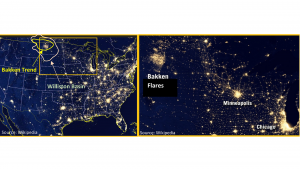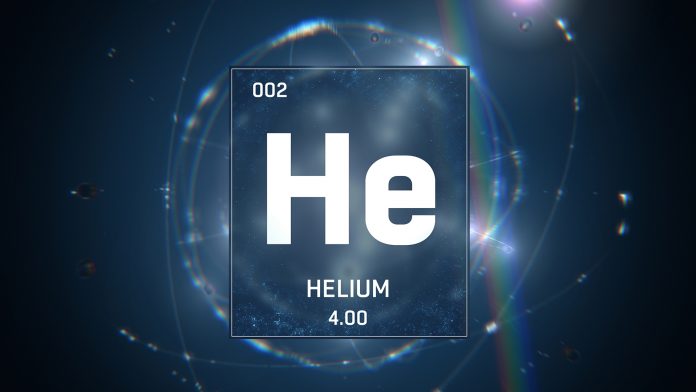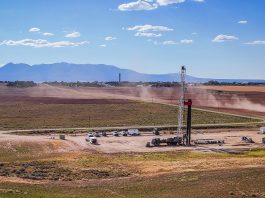Tim Rynott, CEO of Four Corners Helium, and Dr Martin Leipzig of ML and Associates, discuss the helium landscape, issues with losing helium, and how to combat it with innovative helium extraction techniques.
Play with these numbers: The oil and gas extraction business has existed approximately 18 times longer than the pure-play helium extraction business (160 years versus nine).
With helium reaching as high as $800 per thousand cubic foot (Edelgas), elemental helium is now approaching 260 times the value of natural gas. This is unsustainable, considering North America’s dependence on essential MRI machines and semiconductors. Not to mention helium’s pivotal (and irreplaceable) role in space travel/satellites, quantum research, leak detection, welding, etc.
A decades-long adage in the oil patch states: “In the pursuit of economic oil deposits, go to where it’s already been found”. The same axiom holds today for nascent helium explorationists.
Stripping this vital commodity from established natural gas fields was a logical first step for several early-entry helium hunters. Noteworthy recent examples include Air Products/Kinder Morgan (Doe Canyon, Co); NASCO (DBK, Az), GNG Partners (formerly Paradox Resources − Lisbon, Ut); and New Era Helium (Pecos Slope, TX).
These are meritorious undertakings, although it still comes down to economics. Purchasing a proven field is capital intensive, and be ready to open your wallet for a facility conversion or new build. On the other hand, the portal to opportunity can be enhanced when the world wakes up to the fact that helium is associated with discarded (i.e., free) flare gas.
Considering the United States alone flares ~320 billion cubic feet (nine billion cubic meters) of methane yearly, (World Bank, 2023) while another 21 billion cubic meters (BCM) is vented and leaked per year (IEA Methane Tracker, 2023), exploiting flare gas for associated helium and additional by-products could provide a straight flush in spades.
An example from North Dakota, USA
Although the Williston basin in North Dakota has been one of the most prolific oil basins in the United States over the past two decades, it has also had its drawbacks. An insufficient pipeline network has resulted in the flaring of over one billion cubic feet (28 million cubic meters) of natural gas per day (EERC, 2022). Multiple years of brain-mashing between legislative bodies and oil operators have not borne fruit, and well-funded environmental groups have the ears of many.

A novel approach to loosen this calamitous log jam, spearheaded by ML and Associates, is to utilise state-of-the-art processing techniques to simultaneously sequester carbon dioxide while harvesting numerous saleable by-products derived from the hydraulically fractured Middle Bakken Formation (Devonian-Mississippian).
By incorporating and utilising the processes described below, the practice of flaring gas from the Bakken in the Williston Basin could be substantially downgraded.
Additionally, with the sequential or simultaneous extraction of hydrogen (H2) and helium (He), LNG, NGLs, and high-purity carbon dioxide (CO2) can be captured and sold, or the CO2 can be sequestered (CCUS). Hydrogen sulphide and leftover methane, nitrogen, and by-gases will be removed.
There are two vastly different methods employed to extract hydrogen and helium. Hydrogen is harvested from the gas stream by physically reforming methane (CH4) through the application of a two-stage process: Either ATR (Autothermal Reforming plus Water Gas Shift reaction) or Methane Steam Reforming (MSR), both ‘hot processes’. They yield H2, plus carbon monoxide (CO) in the first phase (ATR), and further hydrogen with high-purity CO2 (carbon dioxide) after the second (SMR) and final stage. Diatomic (blue) hydrogen can then be utilised in fuel cells to generate electricity, ostensibly for various human transport programmes. There exists the great possibility of utilising hydrogen as a fuel for aviation in both piston-engine and turbine-powered vehicles as there is precedence for this today.
There are several methods commercially available to extract 99.995%+ pure helium from gas streams where the helium concentration can be as low as 0.01%. These include the use of passive selectively semi-permeable membranes and Pressure Swing Adsorption. Cryogenic methods can also be employed.
Both the hydrogen and helium processes operate with modular ‘off the shelf’ technology, which is readily available in and for oil extraction, as well as other industries. The novelty here is the process of sequential extraction of the gases, closed-loop processes, as well as the gaseous by-products from flared surface gas, not the mechanics of the well-known, well-tested, and efficient extraction equipment.
Pollution has no borders
Despite modest progress, the world needs to accelerate flaring reduction by more than ten times to have a hope of meeting ‘zero routine flaring’ by 2030 (Capterio, 13 April 2023). The World Bank’s Global Gas Flaring Reduction Programme (GGFR) estimates that in 2022, gas flaring released 357 million tonnes of CO2e.
A specific example includes Algeria, who has been responsible for enormous carbon dioxide emissions. The World Bank and Capterio estimate some nine BCM is flared − a disconcerting upswing from previous years. Did you also know Algeria is the third largest producer of helium in the world, with helium percentages that are 400 times higher than Qatar − the number one helium exporter in the world (~0.2% versus ~0.04%)? Even if governmental subsidies are required, could there be sequential extraction methods, as described above, that could help reduce these emissions?

Assisting in these matters is UK-based Capterio, who use third-party satellite data to track gas flare volumes worldwide in their analytics platform FlareIntel. Combining this available technology with ever-improving composition databases, (e.g. Interpretive Geosciences, LLC, and Geochemical Insights, LLC), innovative entrepreneurs could potentially create both profitable and environmentally appealing win-win opportunities in a variety of niches around the world.
In summary, over the past 11 years, North America has witnessed new helium exploration like nowhere else in the world. Unfortunately, these ~25 pure-play drillers have only developed ~400 million cubic feet (~11.2 MCM) per year of new supplies. This represents less than 8% of the world’s needs. That’s not good enough.
Is it not time to get creative?
Please note, this article will also appear in the seventeenth edition of our quarterly publication.









